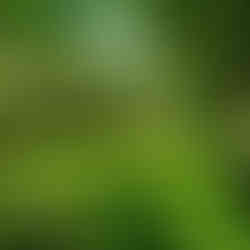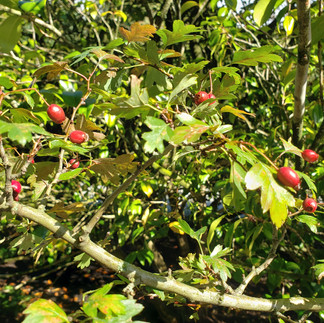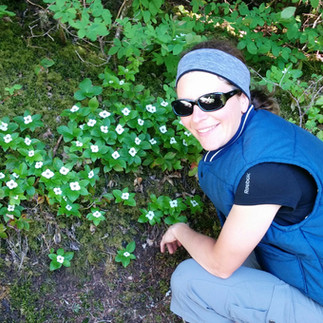Creating an ecological garden space that attracts pollinators and beneficial insects, hummingbirds and various native species of birds and supports healthy plant and soil biodiversity contributes towards a healthy garden, local ecosystem and the environment as a whole. It is as important as ever for gardeners to help play a role in supporting and enhancing biodiversity in their gardens.
“Gardeners have become important players in the management of our Nations wildlife. It is now within the power of individual gardeners to do something that we all dream of doing: to make a difference. In this case, the “difference” will be to the future of biodiversity, to the native plants and animals of North America and the ecosystems that sustain them.” Douglas W. Tallamy. Bringing Nature Home.
It can be quite straightforward and simple and implementing just one or a few of these simple ideas below can have a positive impact on the productivity of your garden, on local ecology and on the environment.
Below I outline the best ways to improve biodiversity in your garden and describe the specific how-to steps to create an impactful ecological garden space.
I was recently featured in a Redfin article which inspired me to write this blog post. Check it out here: Increasing Biodiversity by Creating an Eco-Friendly Yard.
Ideas to Create an Ecological Garden that Supports Biodiversity
Create a wildflower meadow:
Attract beneficial pollinators to your garden by converting an unproductive section of lawn or corner of the garden to wildflower meadow. There are region specific and native wildflower seed mixes suitable for your particular area so be sure to consult with your local seed supplier. The best time to do this in the pacific northwest is early spring to mid spring or March till early May. Choose an area that is in full sun as wildflowers do best in a sunny position.
Instructions:
Start by preparing the area in early spring. You can begin with a blank slate and sow wildflower seed only, a mix of wildflower and suitable grass seed or incorporate wildflower only seed into existing grass. Wildflower seed needs direct seed to soil contact for germination and its own growing space to not be out-completed by grass. Clear the surface entirely of grass, weeds, plants etc or dethatch the area of lawn being converted using a mechanical dethatcher/power-rake or the manual method of using metal tine rake (depending on the size of the area being converted) to scratch the lawn surface, removing thatch and grass and exposing the soil for adequate seed to soil contact. Do not improve the soil with additions of compost or lawn topdressing or fertilizer, as wildflower seed likes a low nutrient soil environment an improving the soil encourages the existing grass to outcompete the wildflowers.
Once the area is prepared, you may spread the seed over the soil surface. I prefer to do this by hand as some of the seed can be small and will come out too concentrated in a seed spreader. Also it allows more control for where the seed lands as you want it specifically on exposed soil and not sitting on top of existing grass.
Water the newly seeded area immediately after seeding and once a day on non-rain dry days until germination. Once established it generally requires very little watering as the taller heights and thicker coverage help keep the surface covered and reduce evaporation. If on a sunny exposed slope, you may want to water once a week during a sustained period of drought, since it will be more susceptible to drying out in this situation.
Create a Micro-Clover lawn:
Create an alternative lawn of Micro-Clover blended with Tall Fescue or add Micro-Clover to an already established lawn to attract bees that thrive on the clover flower nectar. Clover also improves nutrient poor soils as it is part of the Legume family which fixes nitrogen, improving the soil and making nitrogen more bio-available to surrounding plants, such as grass in the case of a lawn space. Similar to the process of creating a wildflower meadow, you can add micro clover seed to an existing lawn or prepare a new lawn of micro-clover and a grass blend, often Tall Fescue here on the West Coast of BC. Micro-Clover often dies back in the winter months as is considered a perennial here in BC so it is wise to blend with grass so there is green coverage all year long. In warmer areas south of the border, clover may be green year round so be sure to consult your local experts.
Instructions:
If starting a new lawn, prepare the site in early spring (as per creating a wildflower meadow) and over-seed with a micro-clover and region specific grass blend. If adding to an established lawn, spread Micro-Clover seeds in early spring to bare patches in your lawn or scarify the surface with a tine rake to expose soil for direct seed to soil contact.
Water-in and provide daily water on non-rain days until establishment. Then water once per week (or on an allowable watering day during summer restrictions) during dry spells. Clover has deep roots and good drought resistance. It is more drought resistant then a standard lawn.
Plant native plant species that support local birds, insects and wildlife:
Specific native plants provide food sources and/or habitat for local wildlife creatures big and small.
Here is a list of common native plants that provide food and/or habitat for native wildlife in the Pacific Northwest and specifically the West Coast of BC:
Conifers:
Western Red Cedar
Western Yew
Douglas Fir
Noble Fir
Western Hemlock
Sitka Spruce
Englemann Spruce
Specimen Trees:
Garry Oak
Pacific Dogwood
Water Birch
Paper Birch
Arbutus Tree
Suksdorf Hawthorn
Understory trees and Shrubs:
Vine Maple
Big Leaf Maple
Serviceberry or Saskatoon Berry
Huckleberry
Nootka Rose
Red Flowering Current
Salmonberry
Pacific Rhododendron
Mock Orange
Groundcovers:
Western Bleeding Heart
Western Swordfern
False Solomons Seal
Western White Trillium
Twinflower
Pacific Lily of the Valley
Wild Tiger Lily
Camus
Wild Columbine
Bunchberry
Oregon Grape
Salal
Snowberry
Shrubby Penstemon
Streamside plants:
Red Alder
Cottonwood
Red-Osier Dogwood
Hummingbirds love the flower nectar of Salmonberry, Penstemon and Red Flowering Current in particular. They are drawn to flowers with a tubular or trumpet shape.
Specific berry producing native plants provide an important seasonal food source for native birds and wildlife. These include Salmonberry, Salal, Bunchberry, Huckleberry, Snowberry and Serviceberry. Nootka Rose provides hips in fall that also provide a food source for birds.
It should be mentioned that there are many fall and winter berry producing plants which are non-native plants that can be planted to provide food sources for wildlife also. These are not limited to native only plants. I will post a blog in the next short while about plants for winter interest including the best for fall and winter berries so do check back soon.
Grow pollinator-friendly companion plants with fruit and vegetables:
Intermingle flowering pollinator plants in the vegetable garden with your fruit and vegetables to attract the pollinators which can help enhance your crop yield and quality. Herbs and perennials that combine well with fruit and vegetables and attract pollinators include:
Flowering Herbs:
Hyssop
Anise
Lavender
Thyme
Bee Balm
Borage
Mint
Avoid planting straight into the grown as it has an aggressive spreading habitat that will take over the garden so grow in a container sunk into the ground or diligently continue to remove excess spreading rhizomes as I do (I have inherited a vegetable garden with it established in the ground).
Companion plants that attract beneficial insects:
Allium
Calendula
Cosmos
Echinacea
Queen Anne's Lace
Sunflower
Salvia
Zinnia
Rudbeckia
Yarrow
Plants that deter Pests:
Nasturtium
Marigold
Lavender
Calendula
Catmint
Sage
Geranium
I find in the case of Nasturtiums and Calendula, they act more as a pest trap, attracting the aphids to them but in doing so, the aphids do not infest the other plants. The predator insects such as wasps and hover flies come in and feast on the aphids so I have not had to resort to using any insecticidal sprays.
Tip: I recently learned Lavender can help deter rats and other pests when grown alongside your food plants. Lavender contains essential oils that act as natural repellents for rats and other pests such as mosquitoes, flies and moths. I had a problem with rats eating my ripe and ripening tomatoes this season. They literally pillaged all the ripe and semi-ripe fruit within a matter of hours so I was researching solutions outside of needing to resort to rat traps.
Create a small pond in your garden:
Ponds provides habitat for dragonflies, frogs and amphibians. This can be as simple as using an old wash basin or water-tight half barrel and stacking rocks inside to create different depths then adding small aquatic plants to oxygenate/purify the water and provide food and shelter to the aquatic wildlife. It’s best not to use tap water when filling the water feature/pond as this may contain too much chlorine for a healthy pond. Use collected rainwater from a rain barrel or other rainwater collection method where possible.
The simple addition of a bird bath that is kept replenished provides essential water for wildlife including birds and beneficial insects. Pollinators themselves require water for survival in addition to nectar and pollen.
Create Habitat:
As important as providing a food source for birds, amphibians and beneficial insects is creating a livable habitation for them. Some ideas include:
Making habitat piles-piling up sticks, branches and logs at the back of a border, a corner of your property or making them a central feature in the garden for small creatures to seek refuge.
Installing a mason bee nest or wooden pollinator house for beneficial insects to make their home
Allowing for fall leaves, stems and foliage to remain in the garden over winter to provide small creatures a shelter and winter protection from the elements.
Allow the garden to retain sources of fall and winter food and shelter for birds, insects and small creatures by not tidying up the garden too much in the fall:
Its important not to clean up the garden too much in fall and going into winter so not to remove food and shelter for birds, insects and small creatures. Dead plant stalks and strong, upright seed-heads can remain unpruned over the winter to feed birds, insects and creatures that don't go into dormancy in the winter. Strong seed-heads such as Echinacea, Monarda, Agastache and Rudbeckia contribute structural value to the winter garden and provide valuable food for birds. Leaves can be left covering soil surfaces to create overwintering habitat for the soil dwelling organisms and to protect plant roots from the cold.
Recommended fall cleanup for ecological gardening:
Clear away perennial foliage that rots and turns to mush in cold weather such as Hostas, Day Lilies and Autumn Joy upright Sedums. Mushy rotting foliage doesn't provide much in the way of shelter. Collapsed or soggy foliage should be removed to prevent the build up of slugs, snails and diseases.
Rose beds should be tidied of fallen leaves to prevent the spread of fungal diseases such as rust and black spot.
Keep lawn surfaces clean and free of seasonal leaves and conifer debris. Leaves can rot the grass below and create bare patches and conifer flagging has toxic compounds that suppress grass growth.
Implementing just one or ideally more of the above sustainable ideas will improve biodiversity, enhance the personal enjoyment of your outdoor space and contribute to a more thriving local ecosystem. Many small individual contributions towards improving biodiversity can have a significant impact on the overall environment as a whole.
“Little drops of water make the mighty ocean.”
― Julia Carney





























































Comments